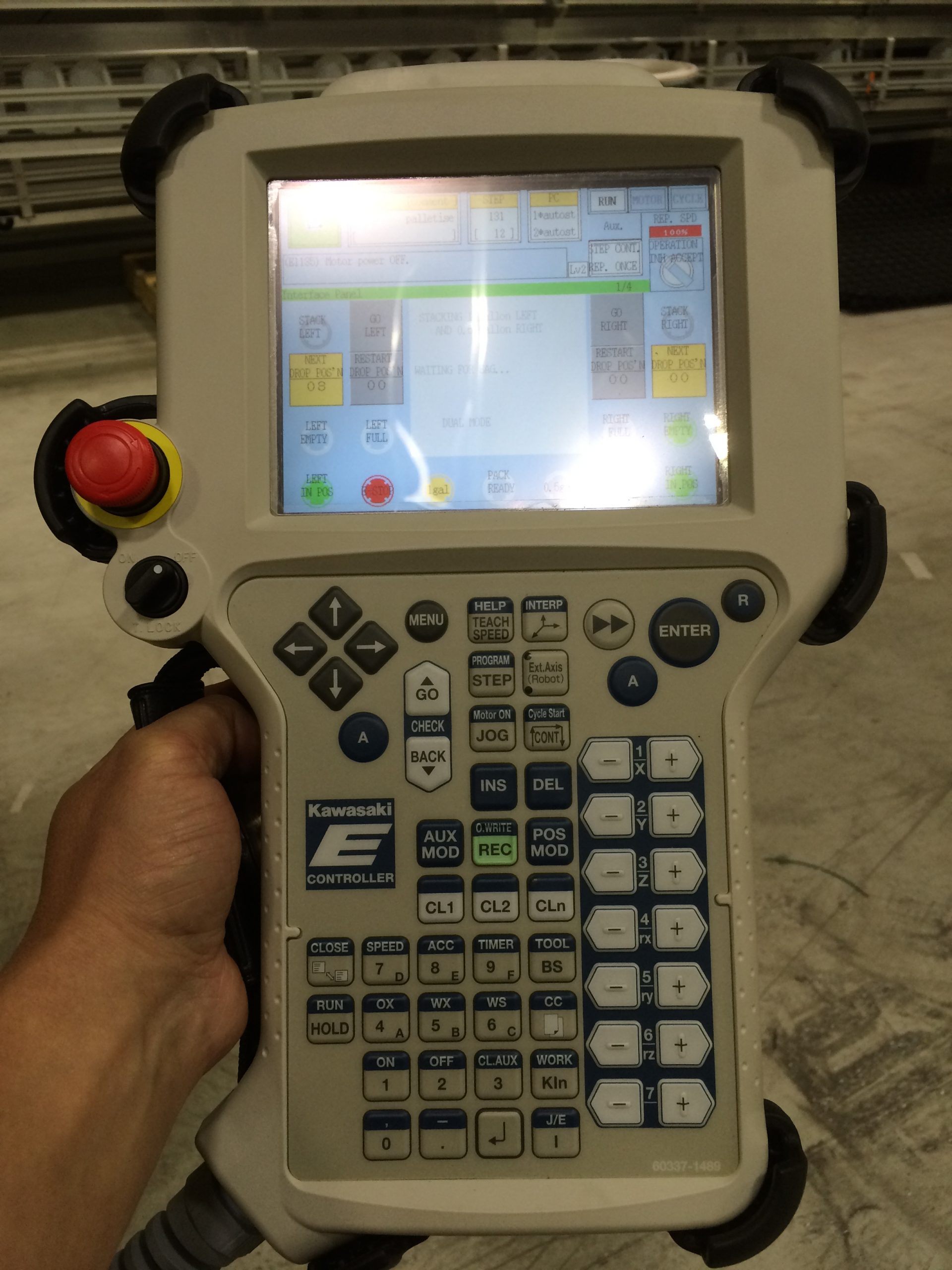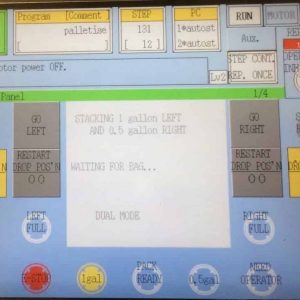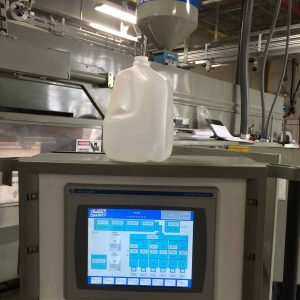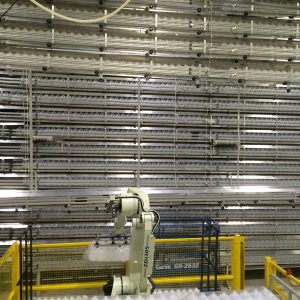
Plains Dairy ‘keeps it moving’ with a feat of engineering
Plains Dairy and its great tasting, healthy milk as well as other dairy products and drink refreshments have been proudly serving the populations of Texas, Oklahoma, New Mexico, Kansas, Colorado, Arkansas and Arizona since 1934. Plains Dairy’s (“Plains”) products are delivered by a cooperative network of around 750+ stores across southern states of the U.S.A.
At 80 years old, this established business which delivers its own brand of milk as well as other brands including: Shurfine, Allsup’s, Lowe’s, and ShurSavings; needed to make some bold moves if it was to remain efficient and continue to grow. Never before had its maxim “Keep it clean; keep it cold; and keep it moving” been so apt or important.
The Status Quo
Let’s consider how many of the modern-day, high-end dairy plants work. Most plants will be filling for 18 hours per day, 5 – 6 days per week, with overall production, fully staffed, 24/7. A typical blow moulding machine will run full-time production, working directly to the fillers on the line and continuing production even if the filler stops. To shut the blow moulding machines off is a futile process as the start-up time is a 20-minute process. However, when the fillers are on changeover, bottles will inevitably back up, and so need to be diverted off to a bagging machine instead to be hygienically stored until such a time as they are needed to be de-bagged and diverted back on to the line. This small part of the process requires full-time staffing.
A blow moulding machine will typically produce 70 bottles a minute, a filler, however, is capable of filling 200 bottles on a good run. This time difference is why it’s essential that bottles continue to be made in order to maintain maximum efficiency. Furthermore, it is necessary for machinery to be on and functioning 24/7 to maintain not only demand but also contingency and third-party bottle supplies.
The way things were at Plains Dairy
Plains Dairy over the years, like most industries, has to continually review then improve on its processes and production environment in order to remain efficient and therefore profitable. As a mid-sized organisation Plains’ production setting comprises of two-gallon jug and one half gallon blow moulding machines. Employees are instructed to run the blow moulders 24/7 in order to make enough jugs needed for current production levels, although the fillers were ageing and running very slow, only filling for 4 days a week. This meant that all running services including power had to remain on permanently in order to create 80 bottles per minute to meet the demands of filling 200 bottles a minute using the current equipment. Furthermore, Plains needed to pay people full-time just to manually de-bag in order to add more bottles to the system and therefore maintain production. Staffing was a significant overhead with many being paid overtime to work weekends in order to maintain the plant.
Plains Dairy’s produce was also on the rise, the logical decision was to purchase an additional two (second hand) blow moulders. Now Plains would have five machines in total and when all blow moulding machines were running, they could meet the filling capacity. However, given the need to continuously change the labels on the bottles and the contents in the bottles (i.e. whole milk, chocolate milk, buttermilk etc.), meant that machines needed to continue to start-stop. Two hours on juices, one hour on chocolate, three hours on whole etc. Around 10 – 12 different products would need to cycle, not to mention the need to change labels. The Frequent product cycling resulted in employees still needed to bag and de-bag which added further to the business’ overheads. The cost of using 2 to 3 bags a minute; every 10 cents a bag, ancillary power, and staffing costs was certainly not a sustainable system. Growth was not going to be an option…something had to change.
 A leap of faith
A leap of faith
Plains Dairy’s Production and Maintenance Director, Colby Butcher, has worked for the business for 8 years. Colby’s decision was to introduce more conveyors as a solution to the start-stop process, reducing the inflating overheads. As a result, he sent out a request for proposal and he received back a number of similar proposals all claiming that their standard conveyors would be the solution.
As an engineer by background, Colby wasn’t entirely convinced that any of these would solve the problem, certainly not for the capacities he was dealing with, or wanted to expand to. Conveyors and baggers would need to run permanently like the blow moulders if this system was to work. This would mean one very long conveyor which would mean more floor space and larger premises or; purchasing shorter conveyors and further bagging and de-bagging machines. Long-term efficiency and growth for Plains Dairy was starting to look very unlikely.
“It was so frustrating,” reported Colby. “I asked for a solution that was going to better automate us. We needed to streamline! Reduce labor costs, use less trailers and effectively smooth out the system. None of the bids I received seemed to address this need; they all just wanted us to add in loads more equipment and operatives.”
Working for Colby at this time was machine automation expert, Andrew Steward, managing director and chief engineer at ALS Controls Ltd. Andrew was implementing the control system retro-fit for the two blow molders Plains’ had recently acquired. Colby decided to consult with Andrew for an opinion and to understand if any of the suppliers’ proposals had any potential.
Andrew agreed that none of the current proposals offered up the right solution to Plains’ problem. They decided that a new and a bit radical approach would be needed. Andrew suggested that the solution was a conveyor but not one that required more space. This conveyor would need to traverse up rather than out in order to increase its length, an Alpine Conveyor, but one much larger than any other previously built. Colby asked for revised proposals from the same suppliers asking them to consider an extra-large Alpine system but no sensible responses were delivered. Most proposals stated that the only way, was to stick with the status quo and to introduce more bagging machines rather than building a taller Alpine as it simply could not be achieved as bottles would undoubtedly get damaged.
For many projects worldwide, Andrew partners with conveyor specialists Plastech Container Systems (PCS) and over the years the organisations together have revolutionised the way many of their customers have operated. Andrew suggested to Colby that Chuck Anderson, owner and chief designer of PCS, would undoubtedly be able to engineer the Alpine solution he had in mind. Trusting his judgement and recommendation, Colby enlisted Chuck to work alongside Andrew to develop the concept and produce some initial drafts.
Although radical, never before attempted, Colby was convinced by Chuck’s designs. The new system would be risky but engineering-wise the plans made sense. Colby consulted with Greg Meador, the vice-president and now president of Plains Dairy, who supported Colby’s initiative in taking a measured leap of faith.
“There were many who thought I was stupid to even consider the Alpine an option, never mind go through with it,” said Colby. “It doesn’t take an engineer to see that the proposal seemed entirely plausible. Sure the risks were high but we were kind of stuck anyway. If it worked, this would be ground breaking and would help ensure the future growth potential for Plains Dairy. One of the traits that I appreciated about Andrew was his willingness to look outside the box, not to increase his bottom line but to do what is needed to help the customer. Andrew has saved me money on other projects by just being honest and having oversight of the whole project, to get the best bang for our buck.”
During the installation process of the new Alpine, existing production remained fully operational in the background apart from scheduled down days with just a couple of hours extra on start-up as new components for the new system were brought on line.
 Keep it Moving
Keep it Moving
Plains Dairy’s mantra continues to remain apt: “Keep it clean; keep it cold; and keep it moving” as to ‘keep it moving’ was exactly the solution needed. So much so that Andrew and Chuck achieved what they anticipate being the largest milk bottle cable conveyor in the world, 28 feet high and 4000 feet long, to be precise. This was a true feat of engineering.
The Alpine Conveyor is truly ground-breaking not only due to its sheer height but also the system needed to ensure that it would actually keep the jugs moving. Smaller conveyors with more baggers and de-baggers would have moved up to 1,000 bottles but some jugs would end up damaged in the process as a result of the stop-start process causing additional costs and waste. Using break paddles would not negate the problem, as conveyors are built with one long cable, which will not stop the crushing effect.
The Alpine Conveyor at full capacity can hold roughly 10,000 bottles. The Alpine will enable a rate of 250 jugs per minute at the bottling facility. The new system can run cohesively for 40 minutes with damage free bottles. In the event the blow molders are stopped, the Alpine can run for 30 minutes flat-out to the filler, without ever needing to de-bag and add bottles into the system.
Commenting on the success of the system, Colby said, “Chuck has designed a very clever system which splits the cable, and has buffers for each of the sections in the Alpine. Andrew has fully automated the system to automatically slow down the blow molding machines in the event bottles should ever start to back up, rather than having to shut the blow mold machines off – assuming we don’t need to be bagging. They’ve integrated all our machines – blow molders, the baggers, de-baggers, resin etc. – under one control system. I can monitor it all at any time and from my iPhone! This was all done without shutting my plant down and that was very important to us.”
Considering the risk Chuck said, “We needed clients like Colby and Greg who had the foresight and the faith that this would deliver. They’ve helped prove our concept and in doing so have the first installation of its kind within dairies and in doing so, have transformed their business – it’s a win-win.”
The need for bagging and de-bagging bottles does still continue occasionally from time-to-time – this is needed for back up purposes in the event of any down time on the blow molder, if for example the resin tower were to collapse.
The bagging process has also been transformed too, with the introduction of ALS Controls fully automated, high-speed bagging machine, capable of switching between both products. Bagged bottles are then moved on to stackable trolley cages as opposed to traditional pallets. The trolleys are also collapsible, so when they are not in use can be efficiently stored, without impacting precious floor space.




The future is ‘Plains’ to see
Plains Diary can now be considered one of the most high-tech, ultra-efficient dairies in the United States. The success of this project was the result of some smart engineering, the ability to think differently, and for someone to take a leap of faith.
As a result of the new Alpine Conveyor, the need for bagging and de-bagging machinery has been negated, although these assets have been retained for disaster recovery purposes and to support the supply of empty containers to neighbouring companies as an additional revenue stream. Blow molders work exactly the same shift patterns as the fillers do, albeit someone needing to start the blow molders a couple of hours ahead of time and, fortunately or unfortunately for staff, a full 3 days of overtime has been lost. As filling is typically finishing sooner as the process has become more consistent – labor costs are reduced further still. In fact, Plains Dairy has the capacity to produce and sell bottles if they wanted to venture into the bottle business.
A by-product of the success of this project is that quality overall as gone through the roof! Bottles are not getting ruined when buffered, bagged, or stored; the waste is far less of an issue.
Further cost cutting, far less burning of diesel and a lot less mess have also been achieved as a consequence of being able to reduce the usage of onsite trailers from 20 to just 3 which are used for back-up purposes or deliveries. This reduction in cost and time is thanks to the new innovative trolleys that have also been introduced. Trolleys have the ability to be stacked using a forklift, removing the need for mezzanine floors to accommodate storage.
As for lessons learned? From start to finish this project took 18 months. In reality it should have taken 6-7 months. However, the hold ups were mainly due to delays in obtaining the right building permits.
Overall, success can be measured in that significantly less hours of work are needed to get the same volume of product out the door. Costs have been reduced throughout, positively impacting margins which have increased by at least 10%. Industry standard payback for this type of project can be as much as 10 years, but adding all the success factors together suggests that Plains Dairy should see a return on their investment within 2 – 3 years.
“Thrilled would be an understatement!” concluded Colby. “ALS Controls and Plastech Container Systems have delivered the goods and the payback has far outweighed the risk. Sure there are further enhancements we can make going forward. It is a breath of fresh air to walk in to my blow molding operation and not see stacks of jugs everywhere, trailers backing in and out, jugs knee deep on the floors from stopping-starting and; just seeing clean floors, full conveyors and basically a calm operation. Blow moulding was a panic room for employees and now everyone wants to work in the blow mold department. The future is very bright.”
The Highlights
- Considered an industry first
- 28′ tall
- Over 4000 foot long
- 10,000 bottle capacity
- Run rate – 250 gallon jugs per minute
- Margins increased by at least 10%
- Labor costs considerably reduced including 3 full days of overtime
- All machinery works the same shifts
- 2 year anticipated ROI vs typical 5 year
- Reduced dependency on bagging/de-bagging machinery
- 20 trailers reduced to 5 trailers
- Existing production remained fully operational (apart from scheduled down days) while construction took place
- Product quality substantially improved
- Less waste
- Improved bottom line for cooperative store owner members
